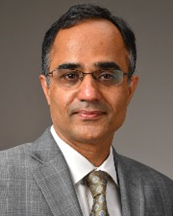Description:
Cognitive processes are brain operations that allow us to perform complex functions that are the very essence of being human—examples include but are not limited to memory, language, control over emotions, resolving conflicting information, reading, making decisions, puzzle solving etc. This invention describes a method and a system that utilizes multifocal direct brain stimulation to enhance cognitive processing.
Background
Direct Brain Stimulation (DBS) has provided many therapeutic benefits. It has been approved by the US Food and Drug Administration (FDA) as a treatment for essential tremors, Parkinson's disease, dystonia, and OCD. DBS is also used in research studies to treat chronic pain, PTSD, epilepsy, depression, and others. However, it has a limited impact on affecting higher brain functions. Consequently, such stimulation has little to no effect on disease states such as epilepsy, memory deficit, psychiatric illness, and language or visual impairment.
Significance and Impact
This invention is a method and system to apply multifocal direct brain stimulation to enhance cognitive processing. The innovation of this invention is to approach brain stimulation from a network perspective rather than from a purely focal perspective. The innovative neurostimulation approach engages and facilitates interactions between multiple brain regions.
Benefits/Technology Advantages
•It provides multifocal direct brain stimulation based on a network perspective, which is more effective than conventional focal DBS.
•It impacts higher brain functions and enhances cognitive processes, including but not limited to stimulation-induced modulation of memory.
•It is an externalized closed-loop system that utilizes neurostimulation of a broad network to activate multiple nodes and stimulate successful recall.
Potential Applications
This invention provides a network-based neurostimulation approach as the optimal strategy to modulate epilepsy and memory deficit, such as but not limited to Parkinson’s Disease and Alzheimer’s Disease. It will not only help to elaborate the epilepsy network in mesial temporal lobe epilepsy (MTLE), but also broadly facilitate the development of miniaturized, efficient, and effective devices for chronic intracranial recordings and closed-loop neuromodulation.
Related Publication
Kim et al. Neurobiol Learn Mem. 2016
Kim et al. Brain Stimul. 2018
Intellectual Property Status
U.S. Patent Issued, U.S. Publication No: US 10589096 B2
Available for licensing.
About the Inventor

Nitin Tandon, M.D.
Professor and Chair ad interim of the Vivian L. Smith Department of Neurosurgery at UTHealth Medical School.
American Board of Neurological Surgery
UTHealth Ref. No.: 2016-0035